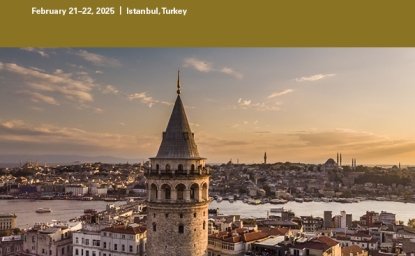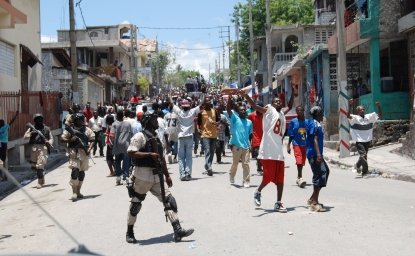150. A Dayton Update From Bosnia: December 1997; Contradictory Croatia and The Dayton Process

Part I:
Charles Ingrao
Critics of continued US involvement in Bosnia have described the Dayton peace process as a real-life "mission impossible" that is doomed to fail. More than one of these skeptics has likened plans for reconstructing Bosnia's prewar multiethnic society to putting "Humpty-Dumpty back together again." My own guarded optimism stems largely from a quarter century studying the former Habsburg monarchy, a state which provides numerous models for multiethnic coexistence when there is a reasonably democratic society based on the rule of law. It is also informed by four trips to post-Dayton Bosnia, during which I've seen that Bosnia has more than all the king's horses and all the king's men at work piecing together this shell of a country. Even the seemingly limitless resources of the industrial world may not be enough to make Bosnia whole, but there is little question that the cumulative efforts of the international community and more than 200 governmental and private organizations can accomplish a great deal.
My most recent trip to Belgrade, Sarajevo, and the Republika Srpska (9-21 December 1997) persuade me that the US and its allies are in a commanding position. They alone have the resources, leverage, and initiative to push their agenda; far from being proactive, the Serb leadership on both sides of the Drina has been reduced to a static defense, hoping that by delaying Dayton's implementation it can ultimately outlast its adversaries. Notwithstanding their penchant for threats, the Yugoslav National Army (JNA) and its Bosnian Serb surrogates now recognize that they no longer enjoy a military option. As early as July, colleagues at the Serbian Academy had conceded that the Republika Srpska would surely lose all of western Bosnia if hostilities were to resume, a prediction echoed by US military and diplomatic personnel who added that the entire entity might fall to Bosnian Federation forces. It is this realization that explains the Pale hard liners' quick capitulation in September's battle of the broadcast transmitters, which featured a rock-throwing mob in Brcko comprised of Serb police and discharged soldiers, dressed as civilians. When I returned to Brcko in December, I found another mob of Serb men confronting SFOR troops who guard OHR headquarters. Only this time they were engaging in a fun-filled snowball fight with the flak-jacketed GIs in which British officers were allied with the Serbs.
But perhaps the biggest cause for optimism stems from President Clinton's admission in December that US forces would stay in Bosnia until Dayton has been fully implemented. With the muted, affirmative reaction of Congress and the American public, the advocates of a "Greater Serbia" have lost their last chance of winning the ongoing battle of wills. If US Secretary of State Madeleine Albright is correct, their recalcitrance will not forestall the implementation of Dayton, but only lengthen the period during which their citizens will have to endure the effects of international ostracism. The economic impact of the wartime embargo and the continuing "outer wall" of sanctions were evident among Belgrade's middle class, which has been reduced to a genteel poverty, and among the roughly half of Yugoslav workers who are unemployed. The widespread feeling of hopelessness was based on the presumption that the situation is unlikely to improve until Slobodan Milosevic falls from power. Toward that end, Zajedno leaders have expanded their search for allies. This fall one party leader spoke confidently about his close cooperation with the Montenegrin opposition led by Milo Djukanovic, while warning that similar ties with Kosovo's Albanian majority would be politically suicidal. When we met again in December, he had just returned from US-brokered meetings in a third country with representatives of the Albanian government. The opposition parties' prospects are fueled by the unpopularity of Milosevic, who is blamed for starting (and, in some quarters, for losing) the recent war.
The situation in the Republika Srpska is somewhat more dynamic. From her capital in Banja Luka, Biljana Plavsic continues to navigate between the Scylla of her own Greater Serb nationalism and the Charybdis of a politically suicidal capitulation to the US agenda of a multiethnic Bosnia. The same US diplomats who found her a thoroughly unsympathetic figure a year ago now praise her as smart, honest, gracious, elegant, and eminently reasonable. Although some high State Department officials have expressed disappointment at the glacial pace of refugee returns, her innocence of criminal activity and the lure of continued international assistance have created an environment conducive to some evolution in her position. At the same time, the recent election and initiatives of Republika Srpska Prime Minister Milorad Dodik have opened a second and potentially dynamic salient in the drive against Pale's hard liners. At the very least, western Bosnia's allegiance to Plavsic, its strategic vulnerability, and its close economic ties with Croatia virtually foreclose any chance of its seceding from Bosnia. In the coming months, US policy will likely focus on helping Plavsic and Dodik extend their control across the Brcko Corridor into the eastern half of the Republika Srpska. Given these developments, Robert Owen's impending decision on Brcko no longer holds make-or-break significance for either of Bosnia's two entities. Current wisdom suggests that he will reaffirm its status as an internationally supervised city under nominal Serb control, a compromise that would maintain Brcko as a bridge across which Plavsic could continue her offensive against her former mentor.
It is entirely likely that domestic calls for a withdrawal of US troops will continue as long as we have a significant number of troops in Bosnia. Nevertheless, the present outlook would appear to vindicate Washington's gradualist, end-game strategy both there and in rump Yugoslavia. The pace may soon quicken in the Republika Srpska with the incremental capitulation of the towns and war criminals of its eastern half. The surrender of Radovan Karadzic would further accelerate the process on both sides of the Drine, especially if the Bosnian Serbs' wartime leader gave evidence implicating Milosevic in the commission of war crimes. Milosevic's hold on power is defined by an inter dependent relationship with the army and secret police, together with a patronage system that guarantees the open compliance of apparatchiki who privately blame him for Yugoslavia's dissolution. Indictment at The Hague would give them incentive to explore alternative means for retaining their place in the network of government jobs and contracts.
The removal of Milosevic and the war criminals he inspired would be a victory both for the US and for a reconstituted, multiethnic Bosnia. But it would also benefit the Serbs. In the words of one senior US diplomat, they are currently "the hole in the doughnut," surrounded as they are by countries that are slowly making the transition toward democracy and integration into the new Europe. Their protection of more than 50 indicted war criminals has desensitized Western statesmen and media to many legitimate concerns and criticisms that the Serbs have articulated over the past eight years. Indeed, the Serbs have become victims of the reaction to their leaders' ruthless quest for a "greater" national homeland. Their redemption lies in the defeat of these leaders.
Part II:
John R. Lampe
What has so stirred up the citizens of Zagreb in these first weeks of 1998? Bosnia and the fate of Bosnian Croats under the Dayton Agreement? The official celebration of Eastern Slavonia's formal reincorporation into Croatia from the last of the six-month UN mandates? Hardly. The number one topic in this prospering Central European city is the new "PDV," a value-added tax of 22 percent that became effective January 1.
As an American economist attached to the Croatian National Bank put it, such a tax is necessary for an economy aspiring to the standards of the European Union (EU). But the public furor surrounding its imposition came not only from its somewhat arrogant, ill-prepared introduction, which was further compounded by merchant confusion and abuse. The absence of exemptions or reductions for vital goods plus the lack of a progressive or comprehensive income tax has caused most of the reaction. Behind the general distress are prices for consumer goods that are so high that driving to Slovenia or Hungary to shop for everyday items has become commonplace. (Although a new measure charging full customs duties on any purchases over $50 will now cut into that traffic.)
Despite the uproar over the PDV, the fate of the Bosnian Federation remains important for a Croatian government that is seeking admission this year to the World Trade Organization and the Central European Free Trade Organization (perceived as stepping stones to the EU and NATO). American Ambassador William Montgomery, recently arrived in Zagreb from Washington, has made it clear that Croatia cannot put its best foot forward without officially and explicitly recognizing the predominantly Croat area of Herzegovina (or any other border region) as a permanent part of the Federation. "Forget any dreams of a great(er) Croatia," he advised in an interview with the independent news magazine, Tjednik, where he also emphasized continuity of the US policy begun by the previous ambassador, Peter Galbraith.
The Croats have yet to disavow any absorption of Federation territory in the future an act which would fracture Dayton at one blow. Yet both the government and President Franjo Tudjman personally have taken a series of steps during the past months to shore up the agreement. First came the tightening of customs controls on the border between Croatia and Herzegovina (although they still fall short of international standards). Then pressure from Tudjman's office persuaded Croat representatives in the Federation to abandon their threatened boycott of the September municipal elections and to replace several of the most intransigent Croat officials in Mostar. Perhaps most important was Zagreb's leading role in turning over ten Bosnian Croats indicted for war crimes (including the most prominent of them, Darko Kordic) to The Hague tribunal.
Yet in November the Croatian government floated a draft agreement for a special relationship between Croatia and the Bosnian Federation. It proposes what an American embassy official called a series of violations of the core Dayton principle of a separate Bosnia and Herzegovina with Sarajevo as the sole capital. Equal status for Mostar as a Croat "co-capital" is no more acceptable under Dayton than is Pale or Banja Luka as a Serb "co-capital." The draft nonetheless proposes a monetary and customs union between Croatia and the Federation. It also envisages joint consultations on foreign policy, border, and defense issues, reminiscent of Serbia's special (and secret and subordinate) agreement with Austria-Hungary in 1881. Full rights of Croatian citizenship, including the controversial right to vote, are further confirmed for all Bosnian Croats.
Croatian officials have responded to Western criticism by calling the proposals consistent with the 1994 Washington Agreement that created the Bosnian Federation and postulated, prior to Dayton, a confederal relationship with Croatia. They add that the draft is, after all, just a set of initial talking points. Unofficial speculation in Zagreb sees in the draft a combination of President Tudjman's own views and, more certainly, compensation to the nationalist hard-liners in his ruling party (the Croatian Democratic Union--HDZ) for their earlier concessions in the fall on elections, officials, and indictees in Herzegovina. The Bosniak government of President Alija Izetbegovic in Sarajevo summarily rejected the draft agreement, and the state-controlled media (all television and most of the press) in Zagreb have all but ceased to mention it. The media is not silent, however, about the circumstances of the small Croat minority (10 percent) in Bosnia and Herzegovina. Their most justifiable objections are to pressures from local officials of the ruling Bosniak Party of Democratic Action (SDA) both against Croats still resident in central Bosnia and against Croat refugees from the 1993 warfare seeking to return. Official US sympathy for their return is grounded not only in the principles of the Dayton Agreement, but in the hope that if one refugee group of manageable number is resettled, it could open the way for other groups to return elsewhere in Croatia and Bosnia.
President Tudjman again raised the issue of a special agreement with the Bosnian Federation in a meeting with Federation officials in January to celebrate Eastern Slavonia's release to Croatia. The terms of the draft and the prospects for refugees are still troubling in light of changes to Croatia's constitution. The nationality-neutral designation of "citizen" barely survived the HDZ effort to eliminate it in favor of "person." Both terms are now used and require the phrases "attachment to Croatian customs" and "appreciation of Croatian culture." Although the lack of explicit mention of any minority in the preamble to the Croatian constitution was protested and defeated primarily by Serb representatives, the reinstated language still omitted any reference to Slovenians or Muslims. Finally, including the adjective "Croatian" in the state name of the parliament and the central bank confirmed other provisions that grant citizenship to a Croat "person" anywhere, including in Bosnia.
At the same time, Croatian sovereignty in Eastern Slavonia is off to a promising start for its majority Serb population, which has swollen with the arrival of destitute refugees from the Krajina. Only a few thousand have fled to Serbia, despite some alarms to the contrary in the Western press; and the rule of law in the region is holding, including Serb political representation. Article 11 of the Erdut Agreement on Eastern Slavonia continues international oversight on human and civil rights. Croatian officials are rightly aware that there will be American leadership in that oversight. Moreover, President Tudjman has agreed to allow approximately 25,000 Serb refugees to return to Western Slavonia. The much more difficult situation in the Krajina, of resettling the 200,000 Serbs who fled in 1995 and the 100,000 who left before then, lies ahead. Barely 5,000 refugees have returned and they face local difficulties. The majority are in the Republika Srbska in Bosnia, and if they return to the Krajina, it would clear the way for displaced Muslims, into whose houses the Krajina Serbs have crowded.
For now, Croatia's principal contradiction remains. Both its capital city and its human capital throughout the country are well on the way to meeting the standards for joining Western institutions. But progress is undermined by the HDZ's stifling control of the media, the educational system, and the privatization process. The ruling political party also is avoiding the commitment to multiethnic citizen's rights, including the resettlement of refugees, upon which the Dayton Agreement stands or falls.
John R. Lampe spoke along with Charles Ingrao at an EES Noon Discussion on January 23, 1998.
Authors

Professor Emeritus, Department of History, University of Maryland, College Park

Global Europe Program
The Global Europe Program is focused on Europe’s capabilities, and how it engages on critical global issues. We investigate European approaches to critical global issues. We examine Europe’s relations with Russia and Eurasia, China and the Indo-Pacific, the Middle East and Africa. Our initiatives include “Ukraine in Europe”—an examination of what it will take to make Ukraine’s European future a reality. But we also examine the role of NATO, the European Union and the OSCE, Europe’s energy security, transatlantic trade disputes, and challenges to democracy. The Global Europe Program’s staff, scholars-in-residence, and Global Fellows participate in seminars, policy study groups, and international conferences to provide analytical recommendations to policy makers and the media. Read more

Explore More
Browse Insights & Analysis
Iraq Should Consider Extending UNAMI’s Mission


